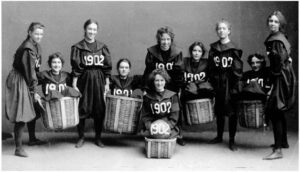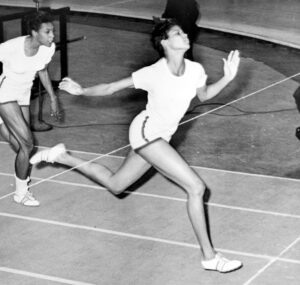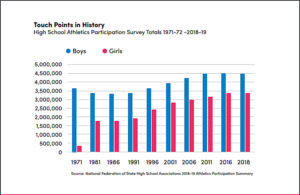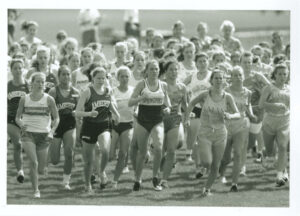Pakachoag: Where the River Bends documents the history of Pakachoag Hill in current day Worcester
By Maureen Mann
Maureen Mann is a Digital Commonwealth Board Member,
Digital Humanities Librarian and Civics Education Consultant
Until legislators and school districts officially decide whether Massachusetts students will recognize Indigenous People’s Day, Columbus Day, or both, educators choosing either cultural celebration do so at the risk of community push-back.
Studying the land, however, offers a peaceful curriculum alternative, not to mention a solid fit with Massachusetts social studies standards and the “Changing Landscapes” theme from the Educating for American Democracy Roadmap, a federally funded guide to civics inquiry released in 2021.
Digital Commonwealth explored land histories in a recent virtual event “From Land Acknowledgement to Land Partnership: the making of Pakachoag: Where the River Bends.”
The College of the Holy Cross funded a partnership of land researchers, media educators, and students to create a 45 minute documentary which tells the story of the land beneath their campus. The film is clear, well-researched, and suitable for young audiences.
It “makes a meaningful resource for our community,” says Professor Sarah Luria, film director and English and Environmental studies professor at Holy Cross. “The fact is every community has the potential to tell a story that is land-centered.” Professor Luria believes connecting with “trustworthy” experts in the community is an important first step to telling successful land histories.
Two of her trustworthy partners were Director of the Greater Worcester Land Trust, Colin Novick and Thomas Doughton of Nipmuc heritage and Senior Lecturer at Holy Cross Center for Interdisciplinary Studies. Both appear in the film walking historical sites side by side while sharing their specialized research which blends beautifully into a fuller history of Pakachoag Village and people of Nipmuc heritage living in central Massachusetts.
“One of the ideas we are working with as we went through this whole project is the notion of erasure . . . which is this notion that magically all of the folks who previously lived here, disappeared one day,” says Novick, “in many cases part of that erasure is building over landscapes that actually are historically or culturally significant.”
As a result of the 2020 film, the Greater Worcester Land Trust and the Quinsigamond Band of Nipmuc, an organization including those of Nipmuc heritage and supporters, partnered in application for a conservation partnership grant from the State of Massachusetts Executive Office of Energy and Environmental Affairs Division of Conservation Services to save one of the last parcels of Pakachoag Hill, the source of drinking water for the native community known as Pakachoag Spring.
Educators might not be in a place to guide students to create a film or a new legal land agreement, but there are several digital resources to help educators connect students to their place in the world.
MASSACHUSETTS LAND TRUST COALITION
The Massachusetts Land Trust Coalition website provides a map of all land trusts in the state. This resource gathers experts, runs virtual programs and sends a monthly newsletter with the latest on land conservation and preservation.
THE COMMUNITY PRESERVATION ACT
The Community Preservation Act (CPA) is a state program designed to help encourage open space, historical preservation, affordable housing, and outdoor recreation. Cities and towns “adopt” the program through town meeting approval which translates into a ballot question at the next town election. Their GIS map shows which towns have adopted this smart growth program passed in 2000. Students will be curious to learn where their town stands in the adoption process.
NATIVE LAND DIGITAL
This Application Programming Interface (API) project created by Victor Temprano documents original native homelands of tribal communities around the world. The resource provides an opportunity for Humanities and Technology educators to partner in explaining API code and data contribution.
As more resources present themselves over time, land histories will improve. Colin Novick made a direct plea to the event’s audience of cultural archivists.
“There is a lot of really great material that is currently hidden to the rest of the world which is in the private collections of individual towns. . . . The documents that you have, the books that you have that aren’t digitized usually have wonderful resources that [will provide] the rest of us a great expanded consciousness if we could eventually get that stuff shared out there.”
The Digital Commonwealth no-cost digitization program provides important support to bring those resources to the greater community. The Boston Public Library is the worksite for digitization and the process begins with a simple Digitization Request Form.
“There are no size limitations,” says Jake Sadow, Statewide Digitization Project Archivist, when it comes to map digitization capabilities, “they should be unrolled and flattened for a few weeks before they come. We can handle pretty much anything.”
Curriculum coordinators can advocate for partnerships for land histories within their community by encouraging local historical societies and libraries to digitize materials, perhaps even offering a civics credit for students helping to ready materials for digitization.



